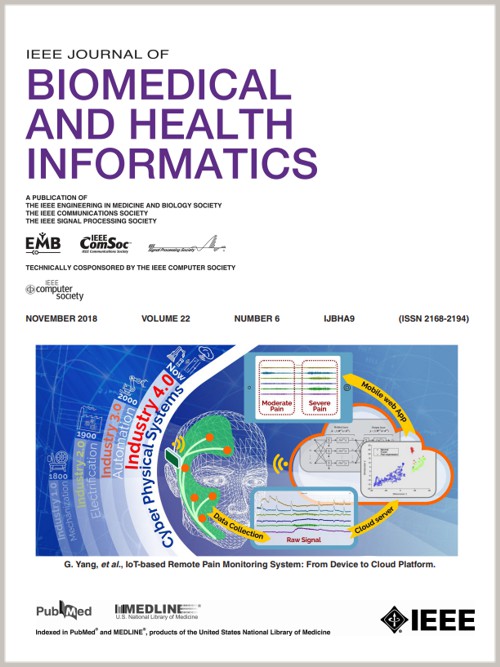利用基于进化算法的 NAS 在弥漫性肺病图像分类中进行特征分离
IF 6.8
2区 医学
Q1 COMPUTER SCIENCE, INFORMATION SYSTEMS
IEEE Journal of Biomedical and Health Informatics
Pub Date : 2024-10-15
DOI:10.1109/JBHI.2024.3481012
引用次数: 0
摘要
在肺部疾病诊断领域,神经网络(NN)在图像分类中的应用展现出巨大的潜力。然而,神经网络被认为是 "黑盒子",很难辨别其决策过程,从而导致对神经网络的怀疑和担忧。这损害了模型的可靠性,阻碍了智能医学的发展。为了解决这个问题,我们引入了进化神经架构搜索(EvoNAS)。在图像分类任务中,EvoNAS 最初利用进化算法探索各种卷积神经网络,最终生成一个优化网络,该网络擅长分离冗余纹理特征和最具区分度的特征。保留最具辨别力的特征可以提高分类的准确性,尤其是在区分相似特征方面。这种方法揭示了分类的内在机制,从而提高了分类结果的准确性。随后,我们采用了基于分布估计的差分进化算法,显著提高了搜索效率。利用可视化技术,我们展示了 EvoNAS 的有效性,赋予模型可解释性。最后,我们使用 EvoNAS 对弥漫性肺病纹理数据集进行了实验。与原始网络相比,分类准确率提高了 0.56%。此外,在相同的数据集上,我们的 EvoNAS 方法与现有方法相比具有显著优势。本文章由计算机程序翻译,如有差异,请以英文原文为准。
Feature Separation in Diffuse Lung Disease Image Classification by Using Evolutionary Algorithm-Based NAS
In the field of diagnosing lung diseases, the application of neural networks (NNs) in image classification exhibits significant potential. However, NNs are considered “black boxes,” making it difficult to discern their decision-making processes, thereby leading to skepticism and concern regarding NNs. This compromises model reliability and hampers intelligent medicine's development. To tackle this issue, we introduce the Evolutionary Neural Architecture Search (EvoNAS). In image classification tasks, EvoNAS initially utilizes an Evolutionary Algorithm to explore various Convolutional Neural Networks, ultimately yielding an optimized network that excels at separating between redundant texture features and the most discriminative ones. Retaining the most discriminative features improves classification accuracy, particularly in distinguishing similar features. This approach illuminates the intrinsic mechanics of classification, thereby enhancing the accuracy of the results. Subsequently, we incorporate a Differential Evolution algorithm based on distribution estimation, significantly enhancing search efficiency. Employing visualization techniques, we demonstrate the effectiveness of EvoNAS, endowing the model with interpretability. Finally, we conduct experiments on the diffuse lung disease texture dataset using EvoNAS. Compared to the original network, the classification accuracy increases by 0.56%. Moreover, our EvoNAS approach demonstrates significant advantages over existing methods in the same dataset.
求助全文
通过发布文献求助,成功后即可免费获取论文全文。
去求助
来源期刊

IEEE Journal of Biomedical and Health Informatics
COMPUTER SCIENCE, INFORMATION SYSTEMS-COMPUTER SCIENCE, INTERDISCIPLINARY APPLICATIONS
CiteScore
13.60
自引率
6.50%
发文量
1151
期刊介绍:
IEEE Journal of Biomedical and Health Informatics publishes original papers presenting recent advances where information and communication technologies intersect with health, healthcare, life sciences, and biomedicine. Topics include acquisition, transmission, storage, retrieval, management, and analysis of biomedical and health information. The journal covers applications of information technologies in healthcare, patient monitoring, preventive care, early disease diagnosis, therapy discovery, and personalized treatment protocols. It explores electronic medical and health records, clinical information systems, decision support systems, medical and biological imaging informatics, wearable systems, body area/sensor networks, and more. Integration-related topics like interoperability, evidence-based medicine, and secure patient data are also addressed.
 求助内容:
求助内容: 应助结果提醒方式:
应助结果提醒方式:


